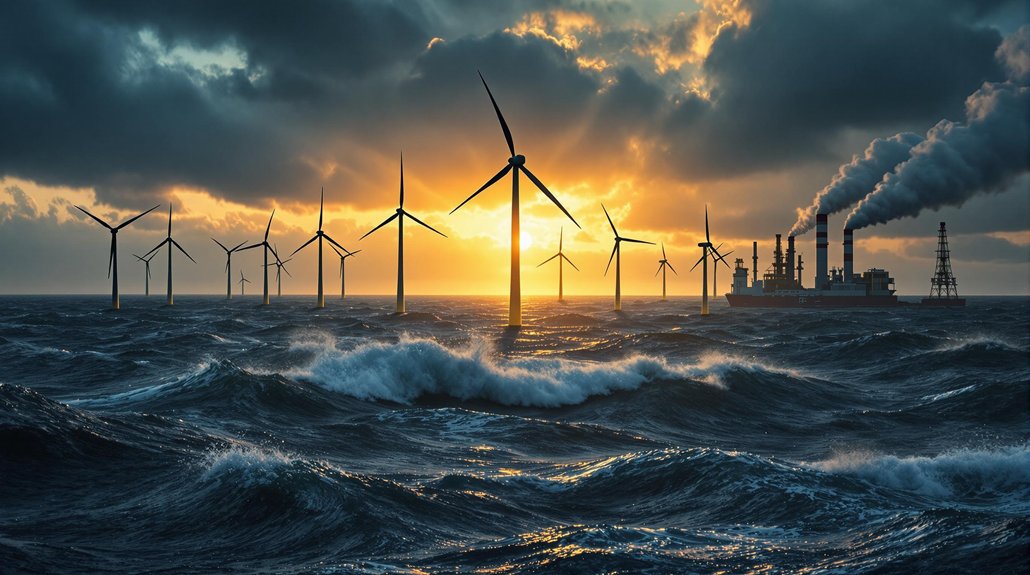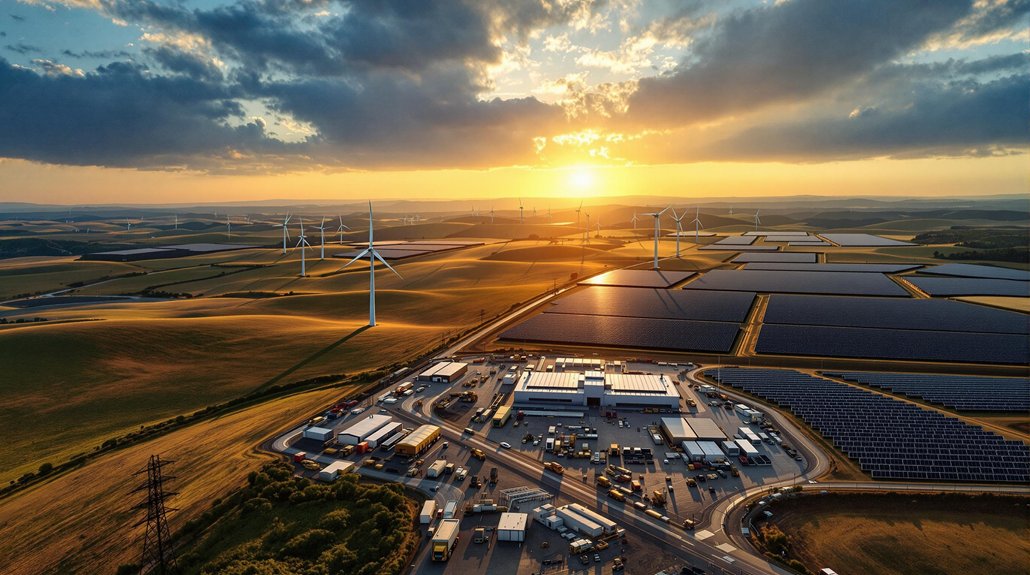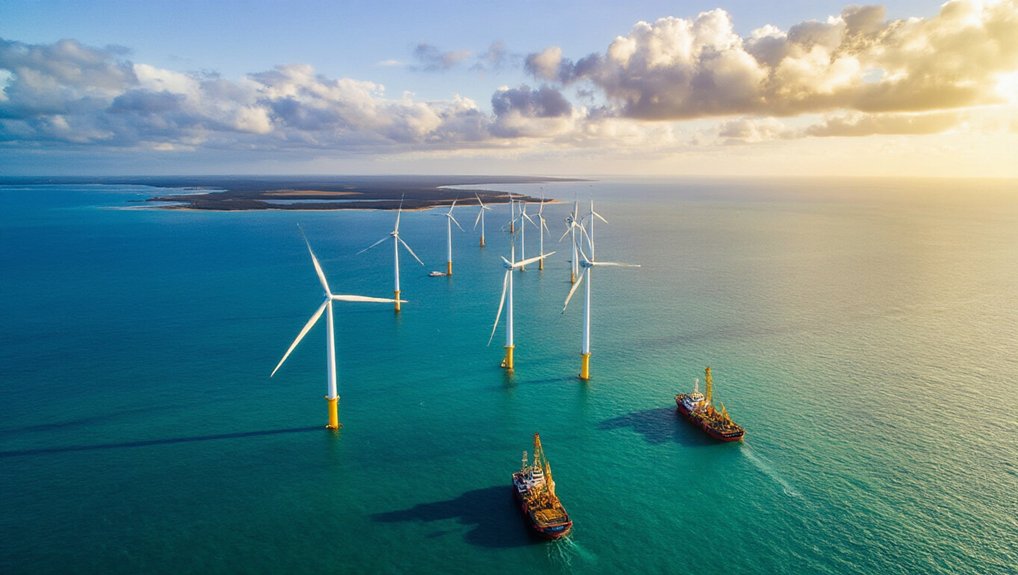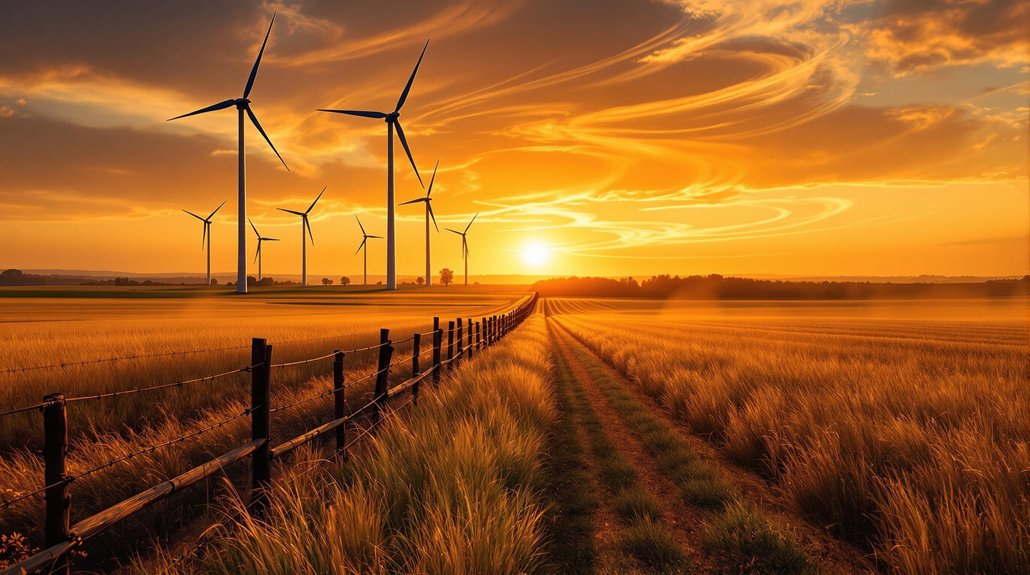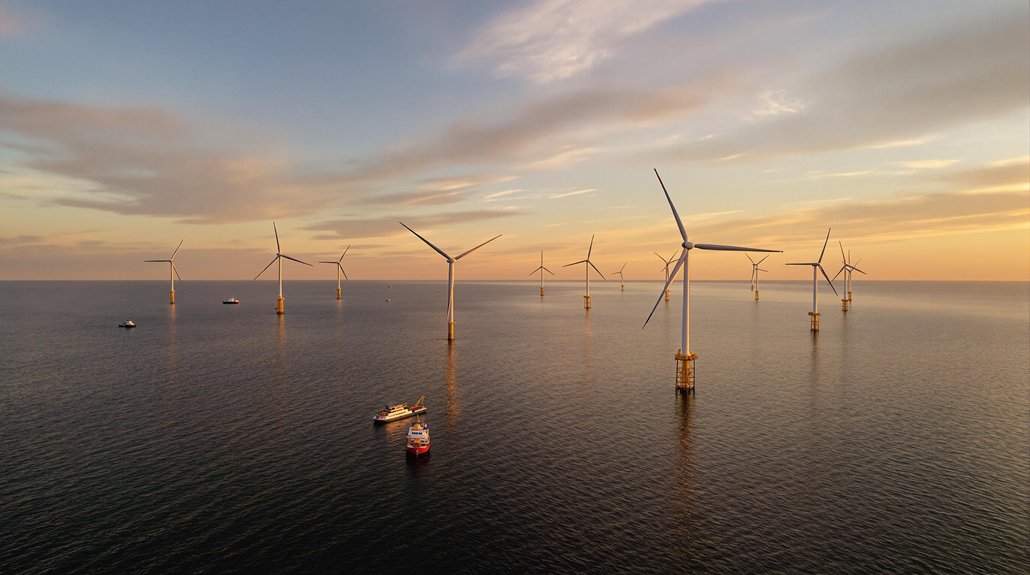The wind industry faces a brutal reality check. A chemical CEO’s demands for double the power at half the cost highlight growing tensions between industrial consumers and renewable providers. Despite wind energy’s projected growth at 45.66% CAGR, the sector struggles with competition from cheaper solar alternatives. Political uncertainty in the U.S. isn’t helping either. Meanwhile, Europe’s supportive regulations and China’s massive capacity show a different path forward. The industry’s response could reshape energy’s future.
The wind energy sector finds itself caught in a whirlwind of contradictions. On one hand, the global market is exploding at a mind-boggling CAGR of 45.66% over the next five years. On the other hand, some industrial leaders are making demands that seem laughably unrealistic. Like that chemical CEO who apparently thinks wind turbines can magically double their output while slashing costs in half. Good luck with that, buddy.
Meanwhile, the offshore wind market isn’t messing around, projected to jump from $4.91 billion to $6.6 billion in just one year. That’s real money. China’s dominating the installed capacity game, with the U.S. and Germany trailing behind. Not that America’s doing terribly—wind already contributes over 4.5% of U.S. electricity generation.
Tech innovations are actually making wind more viable every day. Bigger turbines, smarter maintenance through data analytics, battery storage solutions for those annoying “the wind stopped blowing” moments. The industry’s not sitting still. The sector also plays a vital role in creating 1.46 million jobs globally while contributing to socio-economic development. Modern turbines now achieve impressive efficiency with 25-year lifespans, making them increasingly reliable long-term investments.
But politics. Always politics. U.S. policy uncertainty has everyone on edge. Will the Inflation Reduction Act survive? Nobody knows. Europe seems to have its act together with frameworks that actually support growth. Novel concept.
Then there’s the competition. Solar energy‘s getting cheaper faster, growing quicker. Wind’s CAGR dropped from 12% to 4% between 2021 and 2024. Ouch.
Still, offshore wind holds serious promise. More stable power generation. Floating turbines opening up new territories. Europe’s all in, while the U.S. keeps hitting regulatory roadblocks and lawsuits. Aging wind farms present significant repowering opportunities, especially in Europe and China where older installations can be upgraded for greater efficiency.
Economics might save the day, though. Larger manufacturing scales drive costs down. Corporate PPAs provide financial stability.
